


Elevator Poll Opportunity to Change / Oct, 2023 – As most of you know we have been conducting a one of its kind poll. For the first time a poll was sent to the entirety of the construction industry regarding elevators. Architects, general contractors, engineers, design build firms and elevator professionals responded. Additionally, to have more clarity and to focus our efforts on real solutions we held a series of open forums where we discussed the results of the poll. We heard anecdotal stories that confirmed our findings and consistent reports of issues regarding the current traditional elevator industry.
After the poll and subsequent analysis we can say there is an opportunity to make changes for the better in the construction industry.
And that always was the point. The poll confirmed the problems that had always been rumored. Now we can begin a revolution to foment change that is solutions based. So in this article we are going to examine each of the five inferences the poll questions and forums confirmed and make some general suggestions for improvement.
After all, our desire is to improve an industry that has not substantially changed in how it installs elevators or deals with the construction industry for over 150 years. To make improvements we wanted to start with actual information from the people that deal with elevators and have to live with the challenges they present.
And then start the conversation about solutions. This is the beginning of the discussion regarding those solutions. We know where we have been and now we must start charting a path to where we are going in the future.
The polling and results of the open forums are pretty telling. The current way the construction industry and elevator industry function or rather doesn’t function, is a problem. Both sides have points and counterpoints, but change is stuck because solutions are slow to come forward and then equally slow to be embraced. The poll reflected this with a well documented reticence to adopt each other’s, other options.
We are not hiding the results because we want a full discussion of experiences that back up or reject the results and other inferences from the data we missed. The bottom line takeaway; there’s a problem. So much so that some are grasping for solutions. But don’t take our word for it. We encourage you to look at the graphics and add your comments below as to what your impressions are or the inferences you draw.
This is the beginning of thinking through the issues and not the final word. Just a discussion of possible solutions. This is a continuing of the dialog. We look forward to your input and feel communicating with continued analysis will help both industries (construction and elevator).





With that said, here are early inferences drawn from the poll and open forums:
The overall customer experience is negative regarding the elevator industry. Over 88% feel the experience was horrible to needs improvement. Over 40% felt it was horrible to barely tolerable. No sugar coating it, it is not a good result. However, keep in mind this attitude shifts dramatically depending on occupation or role. 90% of design professionals believe their experience to be generally good. Easy to use websites for plans is a big help. Turns out however websites can’t install an elevator. This also means that the elevator industry focuses effort on the sale of elevator units, not difficulties of those downline from the decision.
The results we found are uncomfortable. Keep in mind that this poll was sent to the elevator industry as well, so they know there’s a problem. The elevator industry front loads their efforts to the sale of the elevator and more importantly to the sale of the maintenance plan. That is their model. They know that if they are chosen they get decades of maintenance fees. So what can change the elevator market and its reputation? It is the market itself. Not to push the problem off to the customer, but until alternatives are explored by the buying public, the elevator industry will continue to be the monolithic monopoly it has become. Immediate considerations is to refuse to purchase an elevator with proprietary parts. Proprietary parts are the hook that keeps maintenance forever attached to the sale and handcuffs the buyer to the elevator company.
Also, consider moving the pain of the elevator selection to the front of the process. That is where longer-term issues can be addressed in the contract for the elevator. Once you are into or past the bidding stage it is in all likelihood too late to make a change as the hoistway placement and size has been determined. One solution being used by a frustrated builder discussed in our forum was to make the hoistway opening big enough to accommodate nearly any elevator. He felt it gave him more flexibility to shop and compare. The elevator problem is so great that losing building space was considered to be a reasonable solution.
The better option is prioritizing the elevator purchase before the drawings are complete and always purchase elevators with non-proprietary parts.
Delays are a huge issue. 65% in our poll say the elevator always creates delays. The nature of how conventional elevators are installed is the problem and solutions maybe limited unless you look into alternatives such as modular elevators. The hoistway is built along with foundation and there it sits until power and a controlled environment is secured.
At the end of any build, the pressure is on to finish up. Tensions run high as time is running out. One person we talked with about the frustration said, on a job the elevator company pushed out completion more than 6-months passed the expected occupancy date. Understandably he was apoplectic, but stuck and he knew it.
The traditional elevator industry has no solution for the pace of the install. They will be done when they are done. The timeline for the elevator crew is often times at odds with the construction manager’s expectations. Increased communication can be a big help, but this can’t be just chatter. There must be clear timelines to be adhered to and notification of steps to completion must be communicated clearly to everyone involved. This is especially true regarding life/safety trades and when they are checked off as complete. One phone line can cause delays of weeks and costly change orders.
Explore other options. With modular elevators the elevator arrives already installed and can even be used as the construction hoist. It sets in a couple hours and the start up is a week long process not months. With traditional elevators, back ordered components, over-stretched elevator crews, and even poor weather can stall or even stop installation. When the installation takes place in a factory there are no such delays.
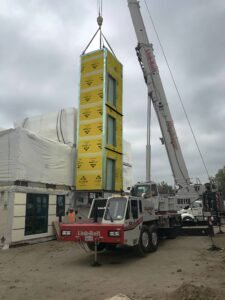
The most important consideration regarding the purchase is on-time start up and use. But there is no control over that with current industry standards. The conventional elevator is an immovable object stuck on the critical path. That creates a feeling of loss of control or helplessness.
Cost, Type of Conveyance and Structure are also concerns that sometimes present few options for improvement.
Regardless of the type of elevator, the inspection process is out of the hands of the elevator contractor in most jurisdictions. These must be scheduled in advance. So the solution is to make sure you have a checklist of completed items, before the inspection is scheduled. Call backs can mean costly change orders and delays.
When it comes to costs that is often linked with conveyance. Watch out for being oversold. It has been relayed to us in any number of conversations that traction or roped units are being recommended for extremely short travel distances. The initial cost for traction units is higher as well as the lifetime costs through maintenance agreements. Quit over buying your needs.
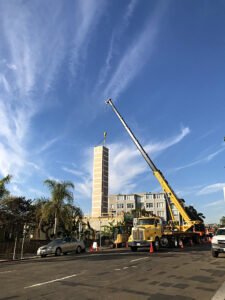
Additionally, cost of the elevator does not encompass all the ancillary aspects of the build, so at the end of the project the actual investment in the elevator is most often not known. How much money per stop is wasted due to call backs of mud and rock crews, flooring installation and painters? One construction professional indicated the traditional elevator costed him $30,000 to $40,000 more per stop due to call backs of other trades. He found another alternative.
If you want the elevator off the critical path a modular elevator is the route to go. The market for modular elevators is expanding with large elevator companies offering alternatives overseas and new companies starting domestically. Modular is the future for low and mid-rise applications.
There is flexibility! No one polled automatically keeps the same elevator company due to past experience. This means change is possible. But it seems the choice is pushed back to the bidding process creating a lack of flexibility and specs makes innovation difficult.
Using your flexibility to make choices early is the best alternative. By the time you get to the bidding process all of the flexibility you once had is gone. You are locked into the same traditional models that you have always used.
The bidding process leads to specs that stifle innovation. As we have learned and discussed in our forums, elevator companies largely ignore the construction specs in any case. So why push the decision out to or past the bid process were you are now under more of the elevator company’s control?
By the time you are passed the bid phase, it is often too late to consider other alternatives without additional costs. All hope of innovation is gone. Ultimately, construction professionals are often locked into just a couple bad choices so leave your options open, it maybe counterintuitive but research and decide early.
Finally – Start up is the elephant in the room. It is a huge issue, but out often out of your control and even out of the control of the elevator installer, especially regarding inspection and final approval. Cost overruns are constant.
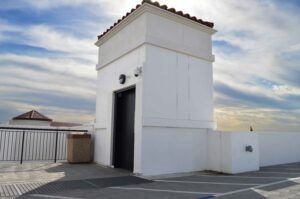
One truism confirmed in our conversations is that lack of communication costs time and money on the project. One example was the push by the general contractor to expedite the elevator inspection. It led to the elevator being fully ready but life/safety aspects of the building were still not complete. That meant a failed inspection and then change orders to return for a second inspection. Open communication would have resolved that issue before it became one.
There are options that include a fully functioning elevator installed that can be used as the construction elevator and then converted to a passenger elevator once construction is complete. Knowing it runs and passing inspection as a construction elevator, is a big benefit to final turn over of the unit. It certainly speeds the elevator to complete readiness faster.
This poll and open forums led to a great new starting point for the construction industry to begin to change in how it views elevators and all the pitfalls. It also gives Modular Elevator Manufacturing and others in the elevator industry the perfect opportunity to change the industry from the inside out. We again are asking you to join us in this revolution. That does not mean buying a Modular Elevator Manufacturing System. It means looking at the elevator industry afresh and deciding early on what mode of vertical transportation works best for the project you are on.
We will continue to update and change our recommendations as responses pour in. Based on the response so far, it is evident there is a problem out there and we can begin to fix it together. The industry can change and improve its image, product and installation methods.
Also, by working together we can reduce headaches, improve start up times and cut costs. That will lead to better strategies and decisions when including an elevator in your project. Elevators will never be problem free, but they can be improved upon and that is our hope as we lead an Elevator Revolution.

In the mean time if you want to know more about the MEM Elevator System please let us know by clicking a link below. You can take a virtual tour of our factory where we openly discuss our process and the elevator industry. You can also request a Fast Track Quote if you have a project in mind and are curious about the solutions we offer. One more reminder – please comment below. Your input is important.


Place your elevator order now. There are three distinct dynamics currently at play right now at Modular Elevator Manufacturing (MEM). These dynamics may come into play regarding your elevator order. They may influence when you pull the trigger so we want to be up front in all respects.
We are facing challenges just like most of the construction industry with supply issues and inflation. Elevators are unique, but not unique enough to avoid basic economics. So the current climate inevitably leads to the following question. When do you pull the trigger and OK the elevator order? You know you need one…so when do you start the process. Below are some things to consider.
First, we recognize that times are tough or at least getting that way. These tough times extend to all your suppliers us included. As a result we want to let you know everything we can to keep you informed. See, we understand the dilemma you are in and want to be real clear and honest about the market now and how it will effect your building project. So here are three important things to think about regarding timing of the elevator order. Consider the following:
Explaining point one in more detail. There is a myth floating around out there that an elevator can be produced in less than eight weeks. Lead times for the components alone blows that old canard out of the water. It is simply not true and if it would be possible, I’m not sure I’d ride in it. How the process really works in the modular industry is the elevator begins production based on the delivery date.
“We know deliver dates change and you don’t have a crystal ball! But it is crucial to get your project in line early.”
We simply count backwards based on the time it takes to get high-quality parts delivered and for production to occur. That is when we place your elevator in line for production. Yes, some components are produced in our factory, but like discussed in other blog posts, elevator components come from just a handful of companies. So we set the day of production beginning when the parts will arrive and so production finishes when you need the elevator. Simple math allows for you to get your elevator when you need it, not before or after. As our queue is constantly filling and emptying letting us know early by placing your order gives us more flexibility. The earlier we know we are producing your elevator the better. We know deliver dates change and you don’t have a crystal ball! But it is crucial to get your project in line early.
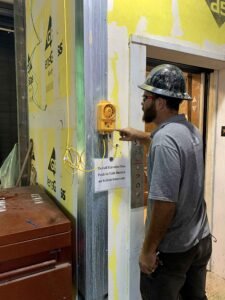
The second point is more difficult on everyone. If you don’t believe me, step outside and look at a gas station sign. The cost of everything delivered has been on a steady rise. Inflation is not “transitory” as first errantly promised and is probably here to stay for the foreseeable future.
The elevator industry has been somewhat shielded from the rise as only around 10,000 elevators are sold in the US every year. It seemed like there may have been enough chips, ropes, and buttons to go around, but supply is tightening.
So far we have done our best to hold the line, but it is becoming more and more difficult to avoid costs being passed on to us from others. That means if you are at a stage of where locking the elevator in is possible…do it now. Of course we would want you to lock in the MEM Modular Elevator System, but it is wise advise regardless.
The last point from above. With all construction costs set to increase, finding savings is crucial. Depending on the job, you may well be able to draw a line through an item completely in your budget. If you use the MEM Elevator for the construction elevator as well we save you money. But, keep in mind the first two points hold regarding timing and inflation. Lock in your elevator order now.
Nothing can be more irritating than facts especially if you don’t like them. But, this blog post laid out the facts about an elevator order and the need to think it through quickly. Because although this is about MEM, it is largely the same throughout the elevator industry (here’s an article). Prices are going to increase.
We can help you with your decision making process by giving you a live virtual tour of our factory where you can ask any question and get clear answers. To sign up click the button below. We can and will discuss any questions you have.
If you do have a project in mind and would like information on pricing, logistics, quality or our process just give us some general information. We will respond back with thumbnail prices and be ready to answer any of your questions of concerns.

Understanding the Elevator Industry – The elevator industry seems like a tough nut to crack. They tend to keep to themselves with their own language and their own priorities. They do not even like to talk about anything beyond your need for them. And so far the cloud of mystery is working pretty well. Motivations remain obscured. The technical jargon overrides any conversation. The result is the construction industry remains beholden to just a handful of providers. This is despite the elevator being a rather simple product. One box going up and down inside another box.
But can it really be that simple? It is more complex than that for sure, but the obfuscation by the elevator industry does not help their reputation.
In this blog post I am going to uncover just a few truisms of the elevator industry from the inside. In that way you will understand them or us better. Then you will be able to make more informed decisions regarding vertical transportation. So, here’s the short list. They may shock you and shake your current understanding of the elevator industry, but here they are. I will write about each in more detail below:
Now let me be clear, I am not passing judgement on the ethics of elevator companies. It is just important to understand the industry better. Our hope is that this will allow you to make better choices on your next project.
For most manufacturers, when you buy the product it ends the process. You have what you want. They have what they want (in the form of payment). Both go separate ways unless there is a problem. Not so in the elevator industry. It became apparent early on that there is a ton of money to be made in maintaining elevators. Also, as the product improved over time, it became even more profitable. The parts became more reliable and standards improved. The maintenance contract was born.
To substantiate that point, Otis in a recent SEC filings said, “New Equipment and Service, which, for the year ended December 31, 2019, contributed 43 percent and 57 percent of our net sales, and 20 percent and 80 percent of our total segment operating profit, respectively.”
Did you get that? That means is that new equipment or elevator sales while important are no where near as profitable as the maintenance contracts. Why does this matter? Because selling a type of elevator that maximizes profitability in the maintenance contract is the goal and not necessarily what you need.
One real quick example. In a low rise project often the most cost effective and best functioning elevator is a hydraulic unit. Of course that depends on several factors. Yet people have been upsold and bought a traction unit (one with ropes) when one is not needed in the least. The cost of the maintenance can be three times as much for the traction unit.
Understanding that can change perspectives on the unit required. And there are many other factors that can be influenced with that knowledge. One certainly would take more time to consider the maintenance contract and care less about the up front cost of the unit.
An often overheard phrase regarding elevators is whether parts and components are proprietary or not. Proprietary in the elevator industry does not generally mean what it does in most other industries. Proprietary components outside of the elevator business usually indicates something special. It is something that sets one product apart from the others. Or it can mean something they want to keep secret from the competition.
Not really the case with elevators. The purpose of “proprietary” parts in the elevator industry is not to hide some special trade secret or technology. After all it is just a box that goes up and down in another box. It is to prevent the building owner from hiring a different company to maintain the elevator. As mentioned above that is where additional profit comes from. If proprietary parts did not exist, any elevator technician could service any elevator regardless of brand. Proprietary parts primary purpose is to keep you locked in. Unlike most any other product, you just can’t buy a different elevator once the one you picked is in place. They have you and they know it.
Never shackle yourself to an elevator company by using proprietary parts. Ever. There are alternatives.
Have you ever been to a factory? I have had the pleasure of touring all sorts of manufacturing plants in my life time. From sausages to automobiles I have seen it all. In those facilities it is much like what you imagine. A product starts out in a simple form traveling down a line. During the trip components are added or processes completed. At the end, like magic, a brand new car rolls away or a delicious link of smoky pork sausage is made table ready.
If you are thinking about saving time and trimming costs, the traditional elevator cannot be your solution. Why? Because your jobsite just became an elevator factory.
That process is not what it looks like for big elevator companies. They do produce some components, but in real terms they are bundlers of other companies parts and pieces. They crate them, ship them and cobble them together on site. But the elevator is not manufactured at all, and the parts they actually make are limited. Believe it or not elevator companies have admitted that the real “manufacturing” takes place at the jobsite. The parts for all elevator companies come from a very limited pool of actual manufacturers.
It would be like ordering a car from Ford but instead of a drivable vehicle its like getting a crate delivered with all the parts. Then, they would send a crew to assemble it in your drive way. That is how traditional elevators are created.
This is important because a “quality” sales pitch is nothing more than that unless there is a different process all together. All elevator parts are largely the same and where they differ, they still have to meet the same rigorous standards. Could you imagine the quality issues and interruptions if your car were assembled in your garage? It really is crazy.
Why does that matter right? Really, why does it matter where the manufacturing takes place? It matters because that explains why it takes so long for an elevator installation. Also, if you are thinking about saving time and trimming costs, the traditional elevator cannot be your solution. Why? Because your jobsite just became an elevator factory.
If you choose a traditional elevator company, you will be a lot better off mentally if you just accept the way they do things. Then resign yourself to handing your site over to them until they are done. Things cannot change because the process does not change. You will never be able to hurry a project or even predict a completion date through the traditional elevator company. Believe it or not they have been installing the same way since before the Civil War…our Civil War…in the US. No other industry has moved that slowly regarding innovation.
Why are there delays? Because for the elevator to be assembled, you have to have the right factory conditions and all the necessary parts at your jobsite. One missing part can mean days of delays. If the building gets too cold the elevator crew leaves. This all slows down the process and gives little room for real improvement and no control.
The reason you have lost control of your project is it is now a manufacturing factory for an elevator.
This is usually where you would find the pitch. I have made a compelling argument now I just need to close the deal right? Wrong. At Modular Elevator Manufacturing we know the MEM Elevator System is a much better alternative than traditional elevators, but we also know that acceptance will not come overnight.
The traditional elevator companies are engrained in the construction industry. We know this! So although we care about sales, we care more about the long run. Education is the key. We need to simply inform people as to why things are as they are. Over time we will be viewed as the solution we are and we are willing to accept that. In the mean time we want to be a part of the discussion, a resource and able to give important elevator industry information. We are hoping to bridge the gap between the construction industry and our industry that will lead to better processes, innovation and installation. Our better way through modular elevators will win you over eventually. The MEM Modular Elevator System is actually factory produced and have tons of benefits, but we know recognition of that comes with time.
However, if you want a tour of our facility just click the button below. You can also request a quote if you have a project in mind. We would be glad to supply you with thumbnail numbers.

Modular Elevator Manufacturing (MEM) would like to take the opportunity to recognize and thank all the women in the construction industry during this special week. Women are at every level of the industry due to their hard work, knowledge and abilities. We celebrate Women in Construction Week!
We would also like to shine some light on one of our own and acknowledge her efforts at MEM – Michelle Barra, MEM Corporate Coordinator. Michelle has been with the company only four years but in that time has made a big difference. She quickly showed the initiative, drive and ability to be a leader in a field largely dominated by men. During her time she has gained responsibilities, faced challenges with success and is considered by all of her co-workers as the lynchpin to MEM’s ever-growing success.
She is happy with the difference she has made, the progress she has seen in a male dominated field and also that MEM looks at what a person can do and not who they are.
“Being a valued team member in a profession that traditionally has been largely men shows real progress and opens the doors of opportunity. I am glad that MEM looks at my abilities and what I bring to the table.”
Prior to her employment at MEM Barra was in the US Airforce in another traditional man’s world. She kept F16 fighter jets in action as a sheet metal technician. She earned high praise for her skills and abilities, and gained valuable insights into the leadership skills necessary in the construction industry.
She brought that record of success and positive attitude to MEM, where she has been a big part of building it into the largest provider of modular elevators in North America. But, she takes it is in stride, “Here we all pull together and focus on the job as a team. My position coordinates all the moving parts from production to the final inspection process. I know I am respected as a team member and leader and my contributions are valuable.”
MEM is thrilled that Michelle has made a difference and we congratulate her during this special time of recognition.

Well our full name is Modular Elevator Manufacturing (MEM). We have been in the modular and elevator business for around thirty years and as a result the modular industry is very important to us. We see modular as more than just another way to build. It is a continuing and growing methodology that has forced needed change into the construction industry and elevator industry. It has challenged the status quo with better, smarter, safer and faster ways of producing everything from homes to commercial buildings. This approach has resulted in a revolution that we are proud to be part of where there is more accountability and better processes.

For instance with the MEM Elevator System a fully-installed, commercial elevator is placed in hours and started up in a week. It is incredible and something traditional construction cannot accomplish. Our high-quality system goes in so fast that it is often used as the construction hoist to save even more money on projects.
With that said, leading the charge in the revolution towards better building is the Modular Building Institute (MBI). No doubt as they say, they are “the voice of commercial modular construction”! Their mission is to expand the use of offsite and modular construction through innovative construction practices, outreach and education. They do a fantastic job at fulfilling that mission.
So, if you are a modular producer in the construction industry you should be a part of that organization. We are at Modular Elevator Manufacturing. But more than that if you have any questions about modular, MBI and MEM regarding elevators are experts.
To show off a little bit each year MBI has an annual convention called appropriately the World of Modular. This year it is in San Antonio, Texas – April 25-28, 2022. So, if you are not a modular company but are the least bit curious about the modular industry, I would highly recommend attendance. You will find the leaders of the modular business there discussing alternatives to conventional construction and how modular building continues to grow and change the way projects are completed. It is a place to network, exchange ideas, learn from experts and discuss issues.
At MEM we see joining MBI or attending World of Modular as the first step in joining a revolution of better building and higher quality practices that is changing the world of construction. We look forward to seeing you at the show. Make sure and stop by booth #4 and discuss the elevator and modular revolution with our national territory manager Ken Grider. He will be able to answer any questions and give you a thumbnail price on the spot.

If you just can’t wait for the show, you can contact us below for a Fast Track Quote. This modular elevator quick quote will give you all the pricing information you need to get started. You can also sign up for a LIVE VIRTUAL TOUR. During the tour of our production facility you will see how we produce the highest quality modular elevator in the industry. You can also ask any questions you would like about MEM and our process.
So for some see you in San Antonio or for others, see online live!

6 Reasons Modular Quality Matters – We have all been frustrated by low quality. Items purchased in good faith sometimes seem to break before they come out of the box. Or once out of the box, they look or perform nothing like what was pictured or promised when we bought the item. Instead of being happy with the purchase, words like cheap and flimsy cross our lips, meaning that we have been had. The more expensive the item, the more remorse follows.
However, in the modular industry quality is high because we take an antiquated process where onsite construction is the norm and move it to a production facility. What was then built by various people, in various trades, in various conditions becomes an orchestrated symphony of production. Historically poor quality and high cost is moved to a factory where exact processes and standards can be measured and accomplished. The modular process takes various acts of individual quality to a habit of success. For instance, our factory produced hoistways are always plumb and level. That is simply due to our factory processes that cannot be accomplished on the jobsite and it shows.
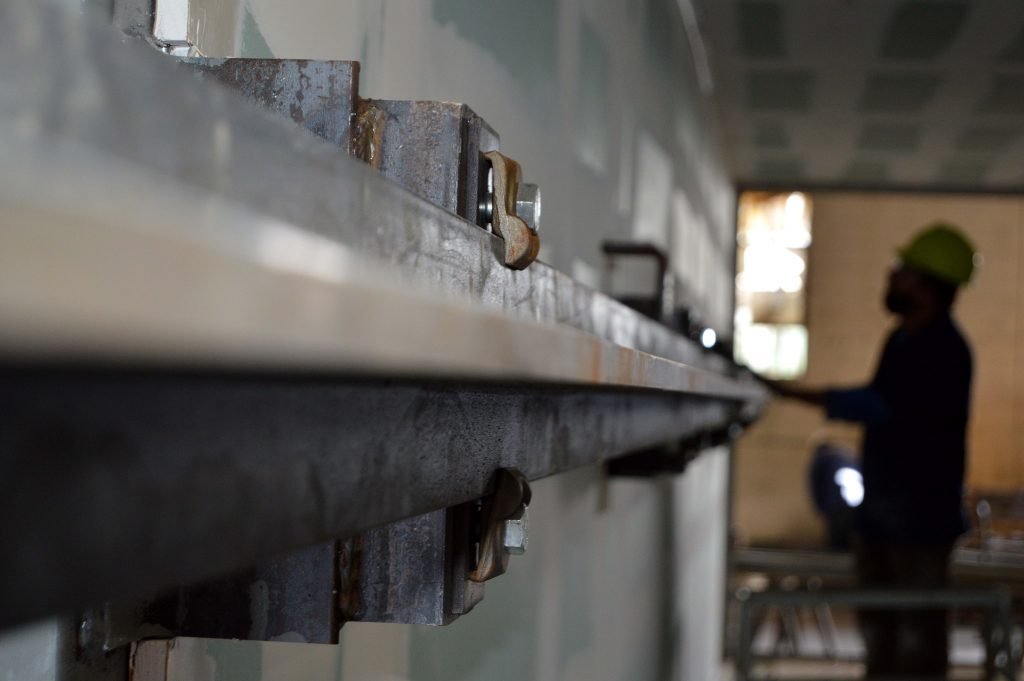
“Quality is not an act, it is a habit.”
Aristotle
As Aristotle said, “Quality is not an act, it is a habit.” And those habits are formalized into higher quality with modular manufacturing. In modular building you will never hear “close enough” or “I guess we will have to make it fit.” It is right every time, because the habits that produce quality are built in.
Unfortunately, there are outliers in some manufacturing facilities. Quality becomes just a slogan. If modular quality matters why do some not improve quality? Procedures are skipped, shoddy workmanship is allowed, new practices are slow to be adopted or worse continued tinkering and “problem solving” doesn’t allow for systems to work. In other words, if you have a team of problem solvers constantly changing the system in an unorganized fashion, the quality will undoubtedly suffer.
At Modular Elevator Manufacturing we make sure changes to procedures are checked and double checked before becoming standard operating procedures because modular quality matters. One person cannot just change something at a whim, even if it is generally a good idea. The procedure must likewise be changed with the whole team being aware of any alterations. That is where habits of quality are formed for the whole organization.
We agree with the Phil Crosby philosophy of quality and as a literal rocket scientist he knew a thing or two about it. He said, “Quality is the result of a carefully constructed cultural environment. It has to be the fabric of the organization, not part of the fabric.” Quality is not posters, or slogans or bright ideas that get used once and then forgotten.
For us quality is a top-down effort and philosophy emanating from senior leadership and permeating the organization at every level. Quality is crucial and should matter that much at every business. It does at Modular Elevator Manufacturing where we take quality seriously.
With that said here are the 6 reasons quality matters for us at MEM. There are probably more but these came to mind:
The entire premise of modular construction is that by instilling factory processes into the construction trade, the industry can produce a higher level of quality, faster and often at a reduced cost. That is what we do at MEM day in and day out. However, when slipshod practices and lack of experience infiltrate the market, quality declines. Then the premise of factory production being better comes under attack.
Whether due to ignorance, no experience or a desire to make a fast buck, when quality is ignored the reputation of the industry gets sullied. The result is a better process that produces a better product (safer, greener and faster) becomes more difficult for the consumer to accept. Who knows how many dollars, how much time and how much energy has been wasted. How many injuries could have been avoided? All due to a very small number of businesses that do not see quality as important.
That is why at MEM we do not think “close enough” is good enough. We know that low-quality has a cost to the industry, the customer and to safety. We strive for quality in all we do. Whether you need a multi-family unit elevator or one for a medical facility, an elevator for a retrofit project or new construction we provide a quality solution.
If you have tried modular elevators before and found that the quality was not as promised, don’t give up. Instead give MEM a try. We live by the above list of 6 reasons modular quality matters. You will not be sold a bill of goods for a fast buck, but instead you will find a partner providing quality you can count on.
If you have a project in mind just click the button below, we can get you budget numbers in less than a day. Of course you can also call us anytime, and have a real conversation with an expert in the elevator industry. We are looking forward to talking to you. You can also click the link for a tour of our facility. Also, we are proud of what we do and how we do it. So, if you are curious schedule your live virtual tour today.

Modular elevator complete! Another great project is complete and up and running. This is just an example of the flexibility that you can have with modular elevators.

We loved working with the team to have another elevator set in less than four hours and up and running in less than a week. Great job to the architect and the GC.
Also, thank you MEM team! Everyday you prove you are the best. Modular Elevator Manufacturing – quality elevators taking you to a higher level.
If you want your own elevator to accent your project that will save you time and general costs on your next project click below and get started. We promise to respond quickly with a Fast Track budget number. Keep in mind that the budget number includes the hoistway that is dropped into place. Many folks forget that the elevator comes preinstalled inside the actual steel hoistway wrapped in a mold resistant and fire resistant drywall.
Also remember that the entire elevator and all of the components are already inside. That is why the set process in the picture takes a couple hours and the startup only takes a couple of days. It really is the best system for low and mid-rise applications.

Another win for the team at Modular Elevator Manufacturing! An MEM school elevator was placed at Fred Kelly Stadium at El Modena High School for the Orange Unified School District. The completed stadium replacement was built by Byrom-Davey, Inc. With the architecture completed by – HED Architects.
It was great working with the school district who did a phenomenal job with the project, Byrom-Davey and HED Architects. This team was filled with professionals that truly cared about the end product and it shows!
Below are just some of the videos including the virtual grand opening that was held during the Covid pandemic. Great video, but we cant wait until the stadium is full with cheering fans this upcoming school year!
The video below shows the elevator at about the 23 second mark.
Additionally the video below is a virtual tour of the project. The MEM school elevator is highlighted at the 1:00 mark. The lit hoistway is impressive to say the least.
Also, a virtual grand opening below discusses the benefits of the elevator when talking about access at the 7:30 mark and it is show again at 19:15 when giving a tour of the press area.
Again, what an impressive team and fantastic completed project!
For more pictures of the project and the elevator we encourage you to go to Architect Magazine.
If you think you could benefit from a high-quality commercial elevator for your project that installs in just 4 hours, click the button below for a quote. Or, you can sign up for a live virtual tour to see how we create the easiest and fastest installing elevator in the business.

When it comes to the green movement, it seems everyone has an opinion. Seemingly in play are the validity of claims, the science, who is at fault and of course funding. You probably will be grateful to know I am not going to dwell on any of that in this blog post. Instead, I am going to focus on a real solution we provide when it comes to construction projects. Specifically, how we can help to make construction more eco-friendly by providing a greener solution.
This is not going to be a screed. You can get all you want of that in other forums (there are plenty). This will be an honest look at real solutions or our deeds not words. See, there are two distinct camps when it comes to building greener. The true believers that are keenly aware of environmental issues and sincerely seek out greener alternatives. Then there is a more cynical bunch where “green” is more of a buzz word. It is viewed as an inconvenience, extra cost and larger headache that the builder is required to contend with.

Regardless of which camp you fall into, this post will show MEM as a better solution overall. Regardless of your opinion on sustainability, or the environment we at MEM are still and have always been the best the solution for any low or mid-rise building.
You can be of differing philosophies at the polar opposites of the discussion on climate or environment and still reach the conclusion that our ideas and innovation are needed. We are not necessarily concerned with how you arrived at building greener with MEM we just want to welcome you aboard.
Also, I am not going to dwell on sophistry or window dressing that you see so much of. Let’s face it, it is far too easy to wave around marketing pieces and propped up green accreditation. I grow weary of Neville Chamberlin like pronouncements of true change in our time that are worthless in real terms. Especially, when you consider nothing in the old elevator industry has changed for years. That is until the advent of the revolutionary modular elevator by MEM.
So here are a couple of real ways modular is a greener solution and why we are a better solution overall.
This is huge! Largely due to the fact that power usage for a standard 2-stop elevator with moderate use equals only $40 to $50 dollars a month or less. You can trim that consumption number a bit with LEDs and settings, but the real environmental savings comes during the installation. This is where true innovation can have an impact.
See, believe it or not the way elevators have been installed has not changed since the Civil War. Our Civil War in the US, over 160 years ago! In 1859 even prior the advent of passenger elevators a hoistway or shaft was built in the Cooper Union Foundation Building anticipating vertical transportation. In the lumbering brontosaurus that is the elevator industry that model has not changed since. That sounds crazy but its true.
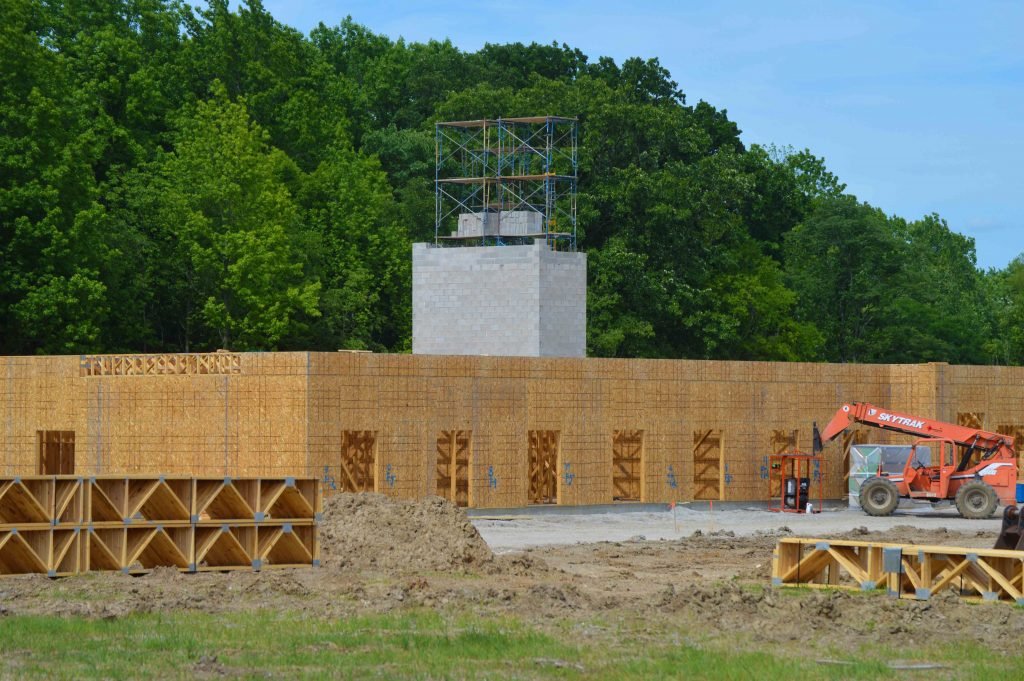
We see it when we drive by a construction site. A concrete block or cement structure is built (usually first) standing there like the obelisk to ignorance it is. This clunky, old-fashioned way of building the hoistway first is an environmental train wreck in many ways.
First, the environment suffers every time a team of bricklayers drives their diesel doolies to the construction site everyday for weeks on end erecting the scaffolding, forms and the hoistway structure. Not to mention the production of the product itself and waste involved in mixing all that cement and producing block.
Despite inroads, concrete, cement and block is the least recyclable material recycled in construction. However, our revolutionary process produces hoistways built out of steel and are therefore greener. This is because steel is the most recycled material in the world, with about 98 percent of all structural steel avoiding the landfill.
Concrete is another matter completely. According to the Cement Sustainability Initiative “Recycling concrete reduces natural resource exploitation and associated transportation costs, and reduces waste landfill. However, it has little impact on reducing greenhouse gas emissions as most emissions occur when cement is made, and cement alone cannot be recycled.” (emphasis added). In other words if recycling and reducing greenhouse gasses is the measure or your desire. Concrete gets a failing grade.
Using steel overall or recycled steel on the other hand impacts greenhouse gasses significantly. It takes 75 percent less energy to make recycled steel than steel produced from its raw material, iron ore. The green solution is a steel hoistway. If you truly want to make a difference in deeds not words, dump as much concrete and block you can out of your plans and go with steel.
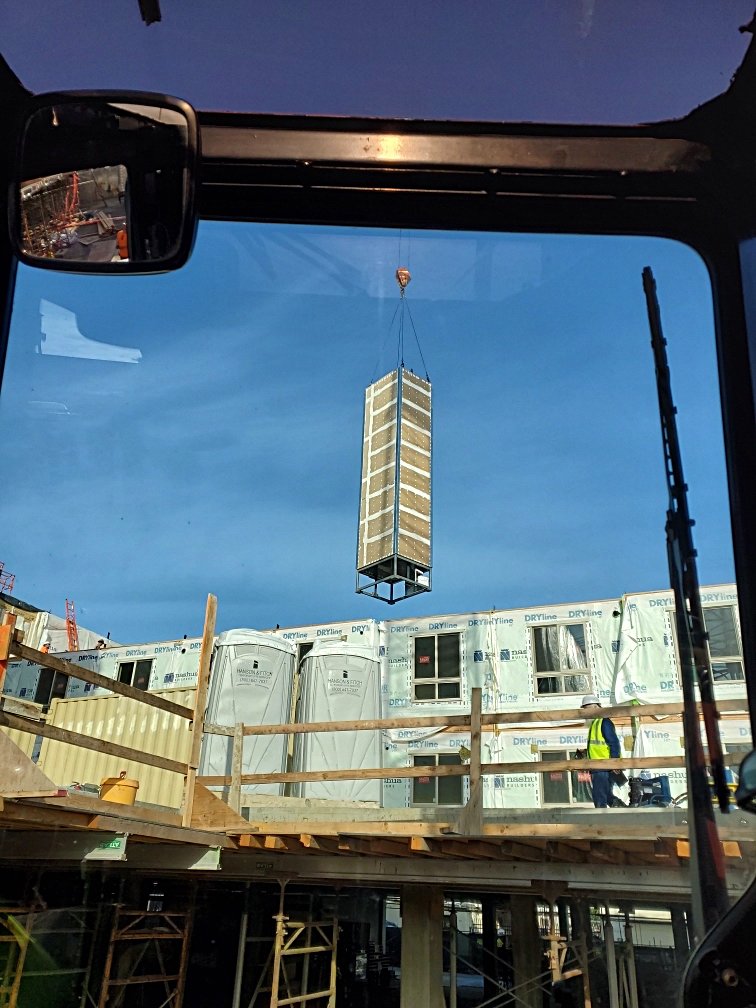
But even more impressive is the possible reuse of the structure itself. A modular elevator can literally be picked up and moved.
Although this does not happen often as the lifecycle of a modular elevator is the same or even longer than a conventional elevator. Repurposing the steel shaft is possible. Even the EPA recognizes reuse as an important component of sustainability. If you cannot use the entire structure it can be cut to length for any number or reuse projects or it can be more easily recycled.
Concrete is severely limited in reuse possibilities, recycling it has no effect on reducing greenhouse gasses and cement cannot even be recycled. To fabricate a steel hoistway it takes less energy overall and less time. It only makes sense to use a modular elevator for any low or mid-rise building.
Another twist on reuse is…pre-use. A modular elevator installs so quickly that it can be used as the construction elevator. Imagine all the carbon it takes to haul in, set up and operate a temporary elevator. MEM elevators can be used instead and then switched to permanent passenger use when ready. This makes sense whether you are looking for a green alternative or not.
We covered the hoistway regarding steel versus concrete and it is a pretty impressive win for modular, but there is more. The actual old method of installation of the elevator equipment is another black mark on the record of the out of date elevator industry. Remember that building in 1859? The Cooper Foundation? Here’s why it matters.
This may shock some of you but, everything that is in an elevator hoistway has to be installed by taking the item through the elevator doors in the building and into the shaft. Everything! Rails to cab, wiring to doors. I tell this to people outside of the construction industry and they look at me like I have three heads. It is that unbelievable. But, again if your model for efficiency is pre-Civil War what do you expect?
So with a traditional elevator a crew drives to and from the site as needed for weeks to hand carry all the bit and pieces of the elevator into the shaft. Inside they screw, cobble, bolt and coerce together all the pieces. As they come and go others come and go too. Parts, components and tools are delivered. And don’t forget lunch breaks. All this travel burns fuel by the gallons. Spewing exhaust to no end in the air.
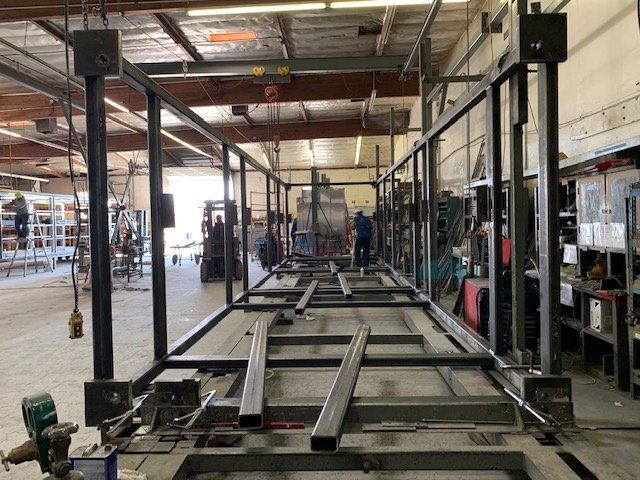
On the other hand a modular unit is completely assembled in the factory. The hoistway is manufactured and then all of the components are placed inside.
Efficiency is what we do and as a result we have a better product delivered faster that eats up less fossil fuels and produces less carbon in the process. Win for everyone. Our installation takes place at a factory with careful inspection and care. There is only one trip with a crane to the site to set the elevator in place. A process that takes four hours or less. Again modular is the greener solution.
In this post I only covered the hoistway and the installation but, there is more…much, much more. The reason is that modular elevators are factory built and have tons of opportunities to save energy, reduce waste and increase recycling.
To you cynics out there that are not believers in the green movement, remember that we revolutionize construction by moving the elevator to the front of the building process. That means your building will be completed faster. Greener for the environment whether you want it or not but greener for your pocketbook in time saved, efficiency and quality.
But the “green” doesn’t end with the hoistway and installation. Here’s a list of other benefits to modular elevators:
Why are the old elevator companies lagging so far behind the curve regarding green issues? In a nutshell, because they are not elevator manufacturers. They are elevator maintenance companies. Their goal is not to innovate or find better ways, their goal is to sell maintenance deals.
With MEM we manufacture elevators and are constantly pushing the industry in new ways by making improvements and seeking innovation. It is what we do and you can see that in our vision – MEM’s Vision: We believe in challenging the status quo…in revolutionizing the “elevator process”. We don’t just think outside the box…we think BEYOND the box.
Lastly, you have to ask yourself, “Is going green really important?” If it is then you have no real choice, modular elevators are a must for any project low or mid-rise project. If you consider yourself green, but do not at least look into MEM elevators then how committed are you really? Remember deeds not words.
For the cynics ask yourself, “For the same general investment would you be impressed with a truly green product that installs in four hours and saves you countless headaches, time and resources?” If the answer is yes (which it will be), then modular again is the best alternative.
Modular elevators are a green solution for everyone. For that reason alone is time to join the MEM revolution. Click the button below for a Fast Track quote on a project you have in mind or set up a Live Virtual Tour of our facility.

Project Management – The Change Problem / When it comes to the English language “change” is a neutral term and as a result can either be good or bad depending on the circumstance. On the good side an IT manager just reminded me that changing my password is a good thing. Especially true if your current password is “password” or “123456”. My very wise mother once told me to change my underwear routinely (just in case I get hit by a car). Every time daylight savings rolls around we change batteries in our smoke detectors. Good plan. And finally, change is a no brainer if a better idea comes along…like modular elevators instead of conventional. But that’s a blog post for another day.
On the other hand change can be not only bad, but very bad. New Coke was a bad change, at least to the devoted fans of the original. They were vindicated when New Coke was pulled from shelves. Remember when we had to start using Windows ME? And then Vista? Both spawned wild conspiracy theories of why they were a forced change. And I’m an old-timer so don’t even get me started on the designated hitter in baseball. Yuck!
Closer to home one of the changes that falls into the “bad” category is changing the project manger regarding an elevator project. It is a real bad idea to rotate through project leadership for a myriad of reasons. Like the old saying, “don’t changes horses in mid-stream” a project manager should be assigned and then remain on your team through out the project. They should start with the sale and progress through the installation process.
That means a consistent long-term commitment from the company as well as the individuals associated with the project. And when it comes to elevators that could be a long time. I don’t need to tell you that it is not unusual for an elevator to be ordered and it not be up and running for two years or more. Construction projects are not overnight endeavors so consistency is needed to make the elevator portion of the project go as smooth as possible.

Equally as important is that your assigned project manager is not a neophyte in the elevator business. You deal with enough bumbling fools everyday, why add another? With Modular Elevator Manufacturing we have team of highly qualified employees that know the elevator and construction industries inside and out unlike other companies. Longevity plus experience means you can trust our team over anyone else.
At MEM our process starts with a simple Fast Track quote. Next are formal quotes, drawings and engineering starting things off. The delivery date and production schedule are determined and come next. Verifying the site and pit dimensions (often skipped by others) followed by set, start up and final inspection. With MEM only one person is solely responsible for each of the steps of your project. So, for every step of that process you will have the same project manager. They will troubleshoot, give you updates you can trust and be there to hand the unit off to you when it is finished.
Many will downplay the crucial role of the project manager. They rotate through any number of them in the time between the sale and the final inspection. That means you as a customer you will be playing a guessing game. Who do I call when a challenges arise? How will I get the answers to my questions? Who will partner with me to keep my project on track?
If you are tired of the project manager merry-go-round, make one more change for better. Use MEM for your next project and see what a difference there is in the process and people at MEM. We are ready for any low or mid-rise building, from affordable housing to hospitals, parking garages to stadiums, schools to commercial structures. Quality elevators taking you higher.
Never miss a blog post again. Sign up for our monthly email newletter. Get important information about elevators, the modular industry and more.
